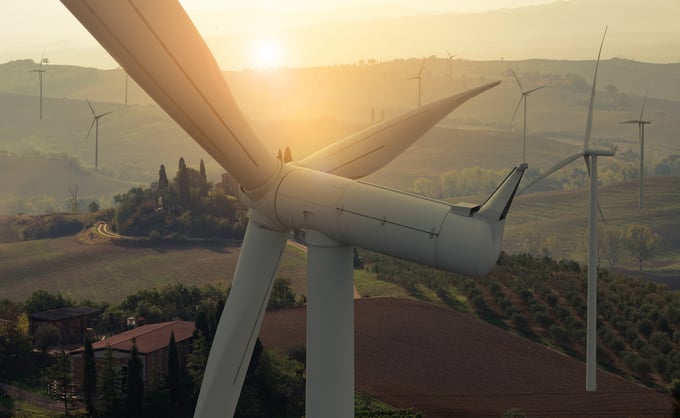A new form of corporate power purchase agreement (CPPA) could have a dramatic effect on our efforts to decarbonise power – but it isn’t here yet. That is the message of a joint report from consultants McKinsey and the LDES (Long Duration Energy Storage) Council. The report, A path towards full grid decarbonization with 24/7 clean Power Purchase Agreements, explains the significance of the 24/7 CPPA model.
CPPAs, direct agreements between energy buyer and generator, are an attractive alternative to conventional supply contracts. This is especially true now that squeezed suppliers are offering less appealing terms at contract renewal time. Businesses see renewable CPPAs as a way to protect themselves from energy price volatility and supply uncertainty while also making progress towards net zero goals. It is no surprise that demand for renewable CPPAs is currently growing exponentially.
However, CPPAs in their current form do not live up to their promise of delivering zero-emissions energy. There are various different models of how a CPPA can work, all with their own flaws. (Take a look at our whitepaper on CPPAs for more detail on the different kinds.)
Most businesses in the UK chose the indirect, or “sleeved” model for their CPPA. Rather than signing a contract with the generator alone, the business enters into a three-way agreement with the generator and a supplier acting as intermediary. The supplier handles the delivery of power to the business and takes the payment.
“100% renewable”: a problematic claim
However, the idea of a “100% renewable” sleeved CPPA is something of an accounting fiction. The problem is the natural intermittency of renewables. When the wind doesn’t blow or the sun doesn’t shine, the supplier has to make up the difference to keep the buyer’s lights on. This means supplying energy from the grid, which comes from an unknown mix of sources. The McKinsey/LDES Council report estimates that this decarbonises the business’s electricity consumption by 40-70%. This is still a big improvement on the grid average, but a far cry from the 100% decarbonisation claimed.
The remaining 30-60% of electricity consumption is “greened” through the use of energy attribute certificates (EACs), known in the UK as Renewable Energy Guarantees of Origin (REGOs). These certify that a unit of energy is renewably sourced, but they can be sold separately from the energy itself. So, a supplier managing a CPPA can use REGOs to claim that the proportion of energy taken from the grid is as green as the rest.
Making the ideal a reality
The good news is, according to the McKinsey/LDES Council report, the ideal of 100% renewable sourcing, or very close to it, can be a reality. The key is data: “24/7 clean power PPAs measure electricity consumption and greenhouse gas emissions on a granular basis — e.g., by the hour — and provide time-matched clean power.”
It is critical to have information in close to real time on the performance of the generation asset and the consumption of the business, in order to align them as well as possible. This is why ENTRNCE developed the Matcher, a pioneering data technology platform that does precisely that. High-volume energy consumers can use the Matcher’s marketplace functionality to choose a CPPA portfolio that is the best fit for their consumption patterns.
But data alone can’t solve the problem unless other barriers are removed. The report outlines two main barriers to making 24/7 green energy happen: the cost of storage and a lack of standards.
Storage capacity is the obvious way to avoid having to fall back on the grid at periods of low generation, but cost can be an issue. According to the report, the levelised cost of electricity for a hybrid system containing with both renewable generation and storage capacity can be over 200 USD (around £160) per MWh. This is prohibitively expensive for many businesses. But this could change as storage costs fall. The US Department of Energy announced last year that it would fund research designed to bring down the cost of long-duration energy storage by 90% by 2030. This decision has emboldened private investors to follow suit.
Standards are another issue slowing down the advent of truly renewable CPPAs. Confusion over how “24/7” or “100% renewable” are defined means that businesses actually procuring more clean power are not rewarded. A standardised framework for assessing the greenness of CPPAs would enable stronger market signals and encourage innovation.
The report is likely to spark a debate in the energy decarbonisation world, and perhaps inspire more action. In the meantime, businesses considering a CPPA need to do their research to ensure that they end up with a contract worth having. ENTRNCE has produced a whitepaper to guide you through the pitfalls. Avoiding the greenwash: a guide for large energy users is available for free download now.




